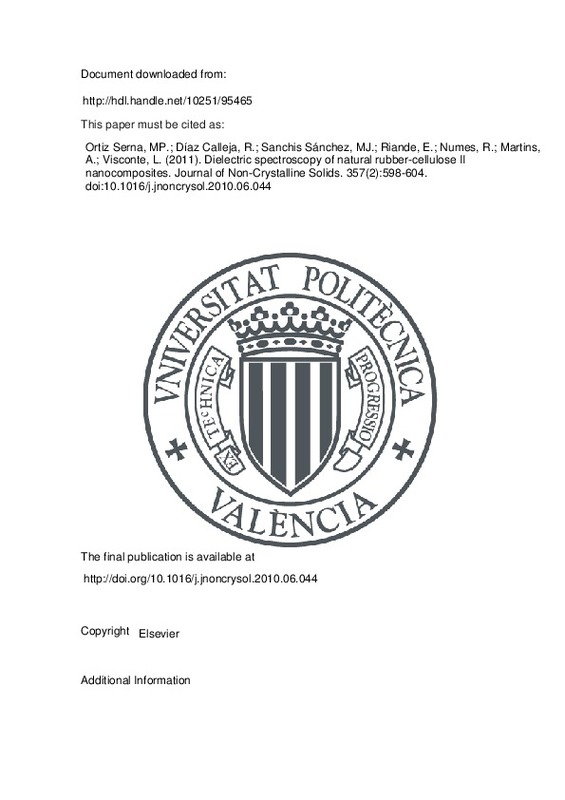Castro Giraldez, M.; Dols, L.; Toldrá Vilardell, F.; Fito Maupoey, P. (2011). Development of a dielectric spectroscopy technique for the determination of key bichemical markers of meat quality. Food Chemistry. 127(1):228-233. doi:10.1016/j.foodchem.2010.12.089
Por favor, use este identificador para citar o enlazar este ítem: http://hdl.handle.net/10251/82791
|
Título:
|
Development of a dielectric spectroscopy technique for the determination of key bichemical markers of meat quality
|
|
Autor:
|

 Castro Giráldez, Marta
Dols, Laura
Castro Giráldez, Marta
Dols, Laura
 Toldrá Vilardell, Fidel
Fito Maupoey, Pedro
Toldrá Vilardell, Fidel
Fito Maupoey, Pedro
|
|
Entidad UPV:
|
Universitat Politècnica de València. Escuela Técnica Superior de Ingeniería Agronómica y del Medio Natural - Escola Tècnica Superior d'Enginyeria Agronòmica i del Medi Natural
Universitat Politècnica de València. Instituto Universitario de Ingeniería de Alimentos para el Desarrollo - Institut Universitari d'Enginyeria d'Aliments per al Desenvolupament
|
|
Fecha difusión:
|
|
|
Resumen:
|
[EN] Dielectric measurements of different standard solutions (nucleotides, nucleosides, lactic acid and myoglobin) were assayed simulating the concentrations of these substances in early postmortem meat. These assays were ...[+]
[EN] Dielectric measurements of different standard solutions (nucleotides, nucleosides, lactic acid and myoglobin) were assayed simulating the concentrations of these substances in early postmortem meat. These assays were performed for considering the potential use of dielectric spectra for the quality control of meat. Good correlations among solutions of Adenosine Triphosphate (ATP), Inosine Monophosphate (IMP) and lactic acid with loss factor at punctual frequencies (0.5, 0.915 and 1 GHz) were found. The other assayed substances did not present a marked effect over the electromagnetic spectra. Good correlations of dielectric properties with IMP and lactic acid content of real pork meat samples were also found at 0.5 GHz. This work is presenting prospective data of dielectric spectra for certain key biochemical markers in order to consider its potential application as a non-destructive control sensor for the prediction of pork meat quality. (C) 2010 Elsevier Ltd. All rights reserved.
[-]
|
|
Palabras clave:
|
Biological meat markers
,
Dielectric properties
,
Dielectric spectra
,
Dielectric spectroscopy
,
Lactic acid
,
Nucleotides
,
Sensor
,
Acid content
,
Biochemical markers
,
Dielectric measurements
,
Electromagnetic spectra
,
Good correlations
,
Inosine
,
Loss factor
,
Meat quality
,
Monophosphates
,
Non-destructive control
,
Pork meat
,
Potential applications
,
Standard solutions
,
Adenosinetriphosphate
,
Biochemistry
,
Body fluids
,
Dielectric devices
,
Quality control
,
Sensors
,
Meats
,
Adenosine triphosphate
,
Inosine phosphate
,
Myoglobin
,
Nucleoside
,
Nucleotide
,
Animal tissue
,
Article
,
Controlled study
,
Electricity
,
Electrochemical impedance spectroscopy
,
Electromagnetic field
,
Food analysis
,
Food quality
,
Meat
,
Nonhuman
,
Pork
,
Prediction
,
Prospective study
,
Spectroscopy
|
|
Derechos de uso:
|
Cerrado |
|
Fuente:
|
Food Chemistry. (issn:
0308-8146
) (eissn:
1873-7072
)
|
|
DOI:
|
10.1016/j.foodchem.2010.12.089
|
|
Editorial:
|
Elsevier
|
|
Versión del editor:
|
http://doi.org/10.1016/j.foodchem.2010.12.089
|
|
Agradecimientos:
|
Grant from Agroalimed (Conselleria de Agricultura, Pesca y Alimentacion, Valencia, Spain) and FPU grant to M.C. from Ministry of Science and Innovation (Madrid, Spain) are fully acknowledged. Work prepared within the Unidad ...[+]
Grant from Agroalimed (Conselleria de Agricultura, Pesca y Alimentacion, Valencia, Spain) and FPU grant to M.C. from Ministry of Science and Innovation (Madrid, Spain) are fully acknowledged. Work prepared within the Unidad Asociada IAD (UPV)-IATA (CSIC) framework.
[-]
|
|
Tipo:
|
Artículo
|






![[Cerrado]](/themes/UPV/images/candado.png)




